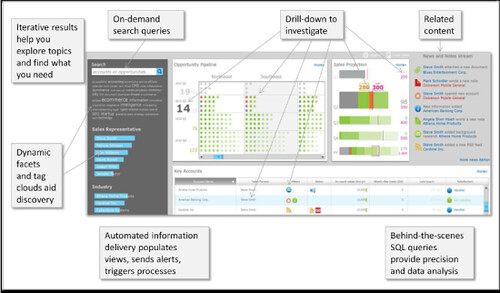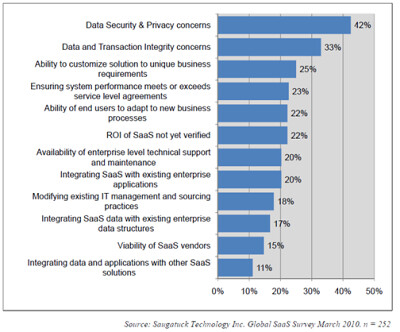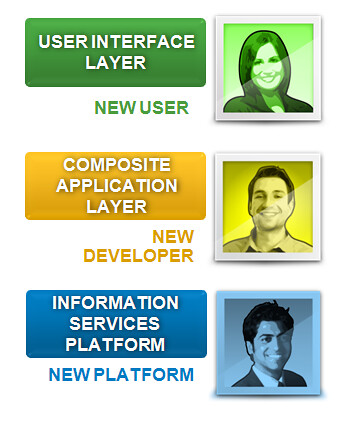Basic Premise
Future winners in the evolving ECM market will need to embrace new composition frameworks that can rapidly deliver solutions at the intersection of content, social, search and analytics, and business process management. Those composition platforms will also need to support hybrid cloud delivery models to deliver optimal business values based on the customer needs.Search and the Composite Application Platform
The concept of search based applications is defined by Sue Feldman and her team at IDC as "applications that combine search and or text analytics with collaborative technologies, workflow, domain knowledge, business intelligence or relevant web services".The definition above introduces key distinctions from the traditional definition of search:
- Search based applications combine a broad range of capabilities: I find this aspect of the definition particularly interesting. From my perspective, this makes search technology one of the building blocks of an application composition platform. It offers both information management capabilities such as information categorization, text mining, indexing, fuzzy matching and information navigation capabilities such as faceted / relational navigation and data visualization in the context of business applications.
- Information is integrated with business processes: this is a critical aspect of search based applications and this is where I believe there is strong overlap with decision management or case management. In a business context, search supports a decision process. Those decisions might be more project centric which will require more collaboration and ad-hoc discovery. They might also be more process or case centric in which a network of processes will manage the orchestration of the decision process.
What about some examples?
First let's look at some examples for best of breed search vendors and how they leverage the concept of search based applications to address their customer problems.New account opening and single view of the customer
Attivio provides the case study of a large global bank challenged to enhance customer service across 40 countries, 50,000 employees and 100 separate sources of information. The bank decided to leverage a search based application to provide a unified view of customers resulting in the enhanced productivity of the customer facing agent, improved customer experience, and a higher percentage of first call resolution rates, while decreasing overall support and maintenance cost.Warranty and quality monitoring
High warranty costs have received significant exposure lately. Think about Johnson and Johnson having to recall 22 products in 19 months adding up to over $900M in revenue loss. Those are nightmares manufacturing executives cannot ignore. Getting the information to identify warranty issues before those organizations are at risk requires visibility throughout the entire supply chain. By integrating data from multiple sources, search based applications provide the right tools to support the discovery and early identification of product quality issues. Endeca offers Endeca Latitude for Warranty to address this problem.A New Kind of Business Application Composition Platform
The examples above illustrate the power of search based application. Those applications become even more powerful when they are combined with an action engine that enables the tracking and processing of warranty issues, the collaboration on criminal investigations or complex financial products. With xCP, our view is that great search and data visualization capabilities need to be combined with the orchestration of content and information that will drive optimal business decisions: for instance a product recall based on the early identification of warranty issues.Samir Batla, product manager for search and analytics at EMC IIG has posted a series of blogs posts on how xCP exposes a wide variety of technologies that enables optimal business decisions and how from early warnings, customers can take action to make pro-active decision for their businesses. As shown below, the anatomy of an optimal business decision requires much more than search. The combination of the broad set of capabilities of xCP is what enables these optimal business decisions.






